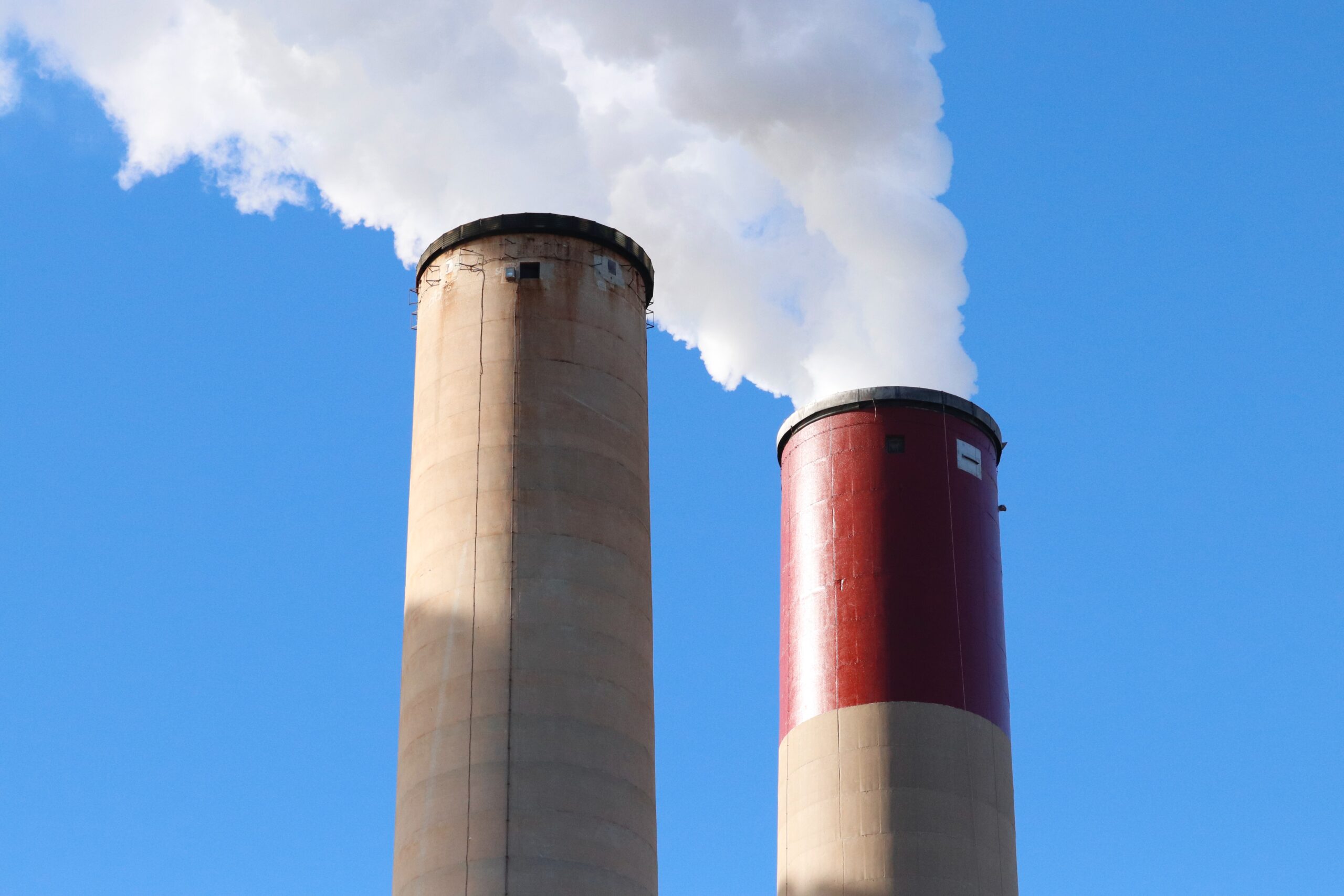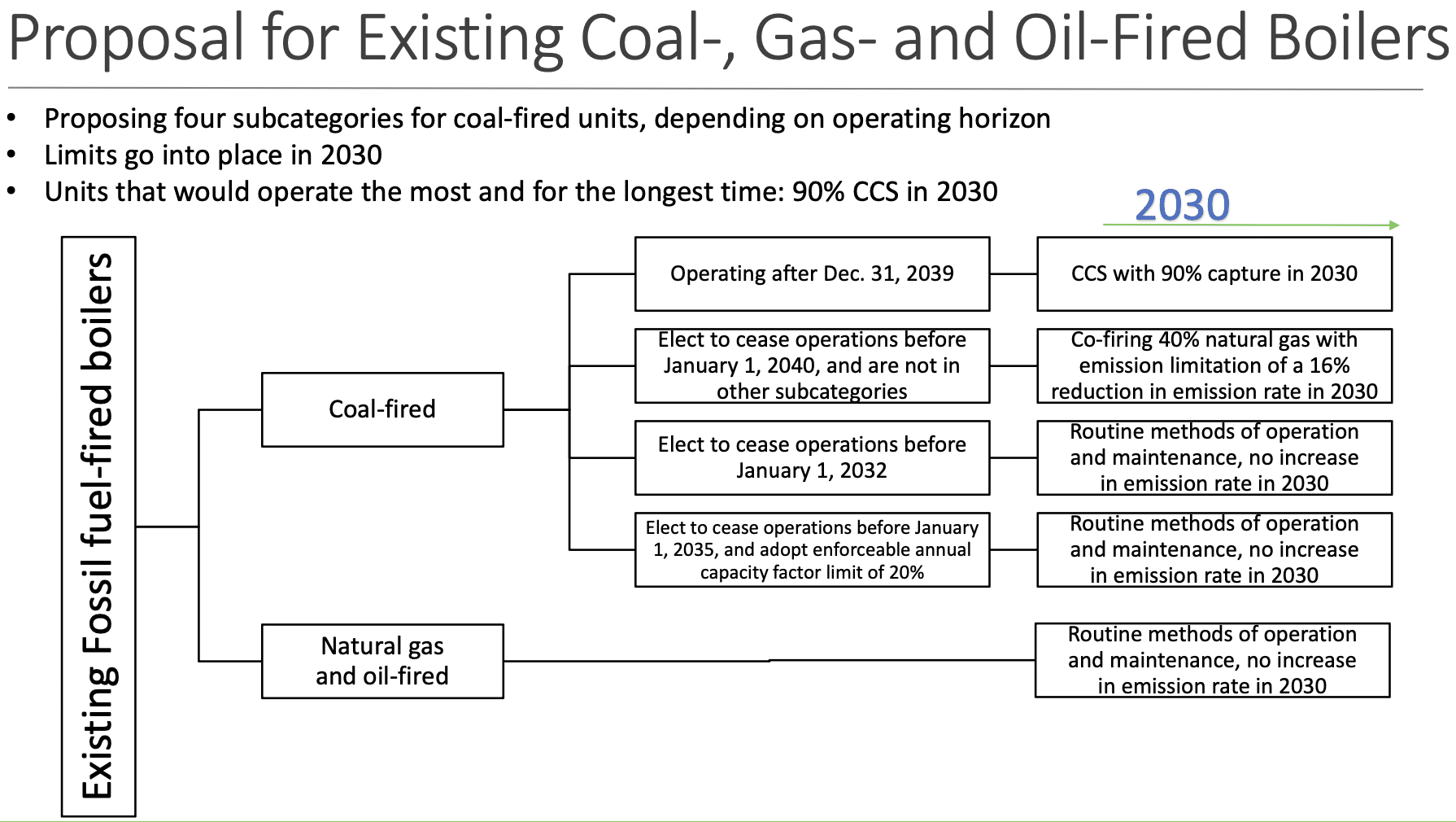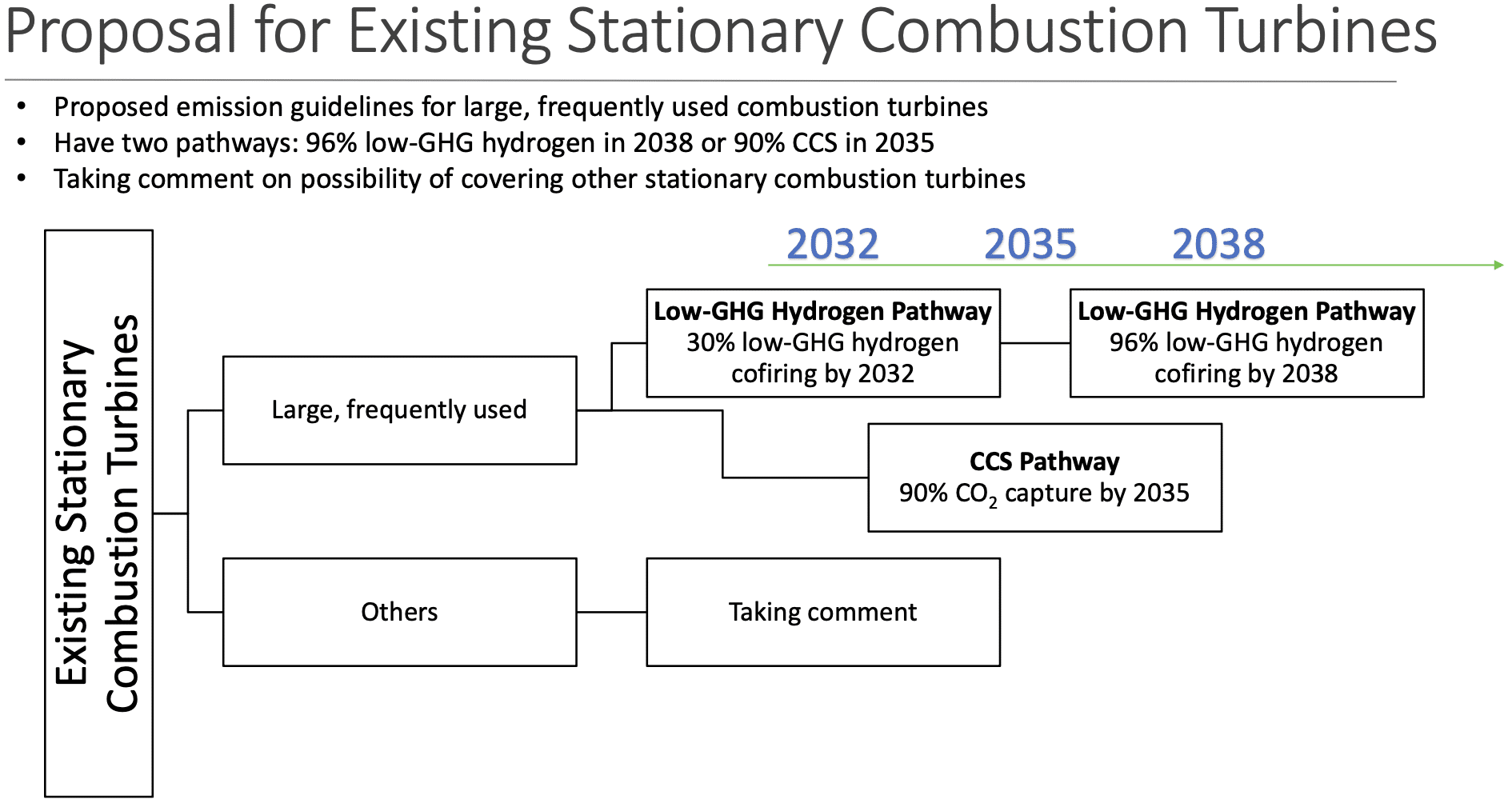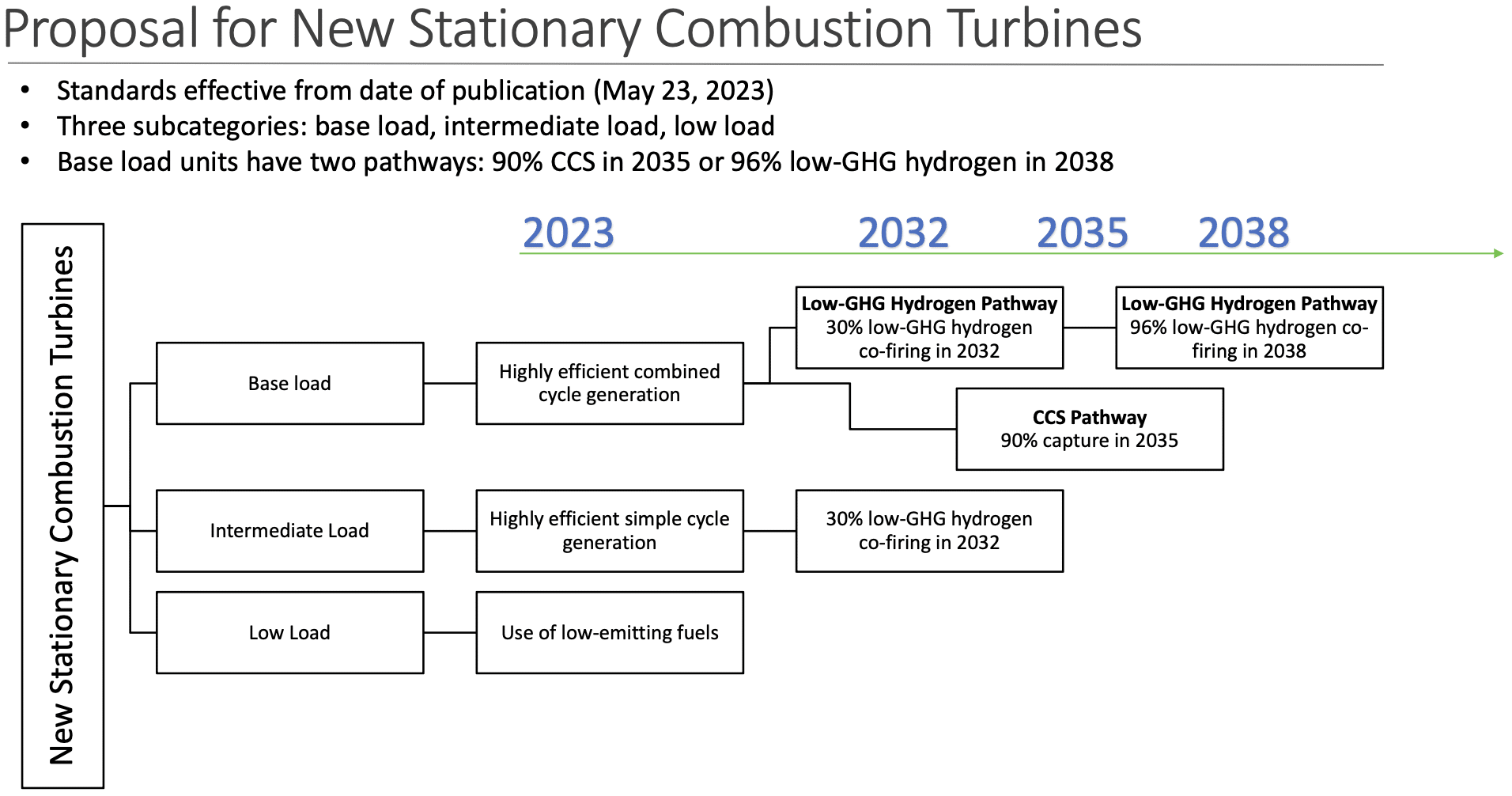Electric power plants produce toxic pollution when they burn fossil fuels, like coal, oil, and gas. The carbon pollution from power plants fuels the climate crisis, making summers hotter, storms bigger, and floods deeper. Fossil fuel pollution from power plants also harms our health, increasing the rate of asthma, heart attacks, and other illnesses, causing people to miss work and school, and even shortening lives. These harmful effects of pollution impact everyone, but they are worse in Black and Brown and low-income communities, which tend to be on the front lines for pollution and climate disasters.
About a quarter of carbon pollution in the United States comes from power plants burning coal and gas. But despite the large share of emissions from power plants, the carbon pollution from the vast majority of power plants has essentially never been regulated by the federal government. A new proposal from the Environmental Protection Agency (EPA) addresses this issue and sets the first-ever limits on most power plant carbon pollution. The proposal would keep the electric system reliable and economical and would spur industry adoption of cleaner power generation resources, resulting in cleaner air and a safer future for all of us.
These carbon pollution rules are long overdue. Experts have warned for decades about the risk of power plant carbon pollution, yet fossil fuel CEOs and their allies have caused delay after delay of meaningful regulations while our communities pay the price of inaction. Nine years have passed since the Obama administration proposed the Clean Power Plan, which coal companies and their allies fought so that it would never go into effect. Now, the opportunities for strong pollution standards are even greater than they were then, and the severity of the climate crisis has only grown.
EPA is currently accepting public comments on the rules. While most people support rules on harmful carbon pollution, we know that fossil fuel interests often fight to delay and weaken regulations. This is why we are asking our members to participate in EPA’s public comment period now. Please add your voice of support for strong carbon pollution limits before August 8.
We urge EPA to work to ensure environmental justice is delivered through these rules and that the needs of frontline communities are met, considering the environmental impacts of the rules. Also, EPA should strengthen its proposal so that it covers more existing gas plants – as is, the proposed level of coverage would only address 30% of CO2 emissions from existing gas-fired power plants, leaving the vast majority essentially unregulated.

Photo credit: Victoria Tanner on Unsplash
There are three primary categories of rules encompassed in the new proposal, covering in essence: 1) new and reconstructed gas-fired power plants; 2) existing gas-fired power plants; and 3) existing coal plants. The standards are designed to match the size of each power plant and the role it plays in the broader electric system. The proposed rules have a large amount of flexibility and multiple pathways and measures that plant owners and operators can choose to meet the standards, including efficiency, switching to fossil gas or co-firing with hydrogen, installing carbon capture technology, running plants less, or retiring plants.
The proposal allows additional flexibility for existing power plants through averaging and trading between different facilities or across the power generation fleet to reach aggregate emissions reductions equivalent to each power plant unit individually achieving its standard, and gives each state the autonomy to create its own state implementation plan, making sure that the compliance plan for existing power plants works well considering local factors.
The proposal has a long timeline to allow many years for planning for and transitioning to compliance with the pollution standards. The three images below, from EPA, show succinctly an overview of the timelines and compliance options for different types of plants.

Credit: Environmental Protection Agency (June 2022). “Greenhouse Gas Standards and Guidelines for Fossil Fuel-Fired Power Plants: Webinar for Communities with Environmental Justice Concerns and Members of Tribal Nations.”

Credit: Environmental Protection Agency (June 2022). “Greenhouse Gas Standards and Guidelines for Fossil Fuel-Fired Power Plants: Webinar for Communities with Environmental Justice Concerns and Members of Tribal Nations.”

Credit: Environmental Protection Agency (June 2022). “Greenhouse Gas Standards and Guidelines for Fossil Fuel-Fired Power Plants: Webinar for Communities with Environmental Justice Concerns and Members of Tribal Nations.”
If enacted, the newly proposed limits on carbon pollution from power plants would improve public health and protect our environment, giving us invaluable tools in securing a stable climate for ourselves and future generations.
EPA must use the authority it has been given by Congress to issue the strongest possible standards. Currently, the rules are a proposal and have yet to be finalized. EPA will take public comments about their proposal until August 8 and will incorporate feedback into publishing final rules in 2024.
There is no time for delay. The reduction in carbon pollution by these rules is sorely needed as our communities face rising heat, extreme weather, wildfires and resulting smoke, and flooding that is growing worse. We urge EPA to issue final rules as early as possible in 2024.
Please take two minutes to add your voice of support for strong carbon pollution limits before August 8.
The post EPA’s Proposed Power Plant Carbon Pollution Limits Are Critical appeared first on SACE | Southern Alliance for Clean Energy.
About a quarter of carbon pollution in the United States comes from power plants burning coal and gas. But despite the large share of emissions from power plants, the carbon pollution from the vast majority of power plants has essentially never been regulated by the federal government. A new proposal from the Environmental Protection Agency (EPA) addresses this issue and sets the first-ever limits on most power plant carbon pollution. The proposal would keep the electric system reliable and economical and would spur industry adoption of cleaner power generation resources, resulting in cleaner air and a safer future for all of us.
Action is Overdue
These carbon pollution rules are long overdue. Experts have warned for decades about the risk of power plant carbon pollution, yet fossil fuel CEOs and their allies have caused delay after delay of meaningful regulations while our communities pay the price of inaction. Nine years have passed since the Obama administration proposed the Clean Power Plan, which coal companies and their allies fought so that it would never go into effect. Now, the opportunities for strong pollution standards are even greater than they were then, and the severity of the climate crisis has only grown.
EPA is currently accepting public comments on the rules. While most people support rules on harmful carbon pollution, we know that fossil fuel interests often fight to delay and weaken regulations. This is why we are asking our members to participate in EPA’s public comment period now. Please add your voice of support for strong carbon pollution limits before August 8.
We urge EPA to work to ensure environmental justice is delivered through these rules and that the needs of frontline communities are met, considering the environmental impacts of the rules. Also, EPA should strengthen its proposal so that it covers more existing gas plants – as is, the proposed level of coverage would only address 30% of CO2 emissions from existing gas-fired power plants, leaving the vast majority essentially unregulated.
Digging Deeper

Photo credit: Victoria Tanner on Unsplash
There are three primary categories of rules encompassed in the new proposal, covering in essence: 1) new and reconstructed gas-fired power plants; 2) existing gas-fired power plants; and 3) existing coal plants. The standards are designed to match the size of each power plant and the role it plays in the broader electric system. The proposed rules have a large amount of flexibility and multiple pathways and measures that plant owners and operators can choose to meet the standards, including efficiency, switching to fossil gas or co-firing with hydrogen, installing carbon capture technology, running plants less, or retiring plants.
The proposal allows additional flexibility for existing power plants through averaging and trading between different facilities or across the power generation fleet to reach aggregate emissions reductions equivalent to each power plant unit individually achieving its standard, and gives each state the autonomy to create its own state implementation plan, making sure that the compliance plan for existing power plants works well considering local factors.
The proposal has a long timeline to allow many years for planning for and transitioning to compliance with the pollution standards. The three images below, from EPA, show succinctly an overview of the timelines and compliance options for different types of plants.

Credit: Environmental Protection Agency (June 2022). “Greenhouse Gas Standards and Guidelines for Fossil Fuel-Fired Power Plants: Webinar for Communities with Environmental Justice Concerns and Members of Tribal Nations.”

Credit: Environmental Protection Agency (June 2022). “Greenhouse Gas Standards and Guidelines for Fossil Fuel-Fired Power Plants: Webinar for Communities with Environmental Justice Concerns and Members of Tribal Nations.”

Credit: Environmental Protection Agency (June 2022). “Greenhouse Gas Standards and Guidelines for Fossil Fuel-Fired Power Plants: Webinar for Communities with Environmental Justice Concerns and Members of Tribal Nations.”
Now is the Time to Add Your Voice
If enacted, the newly proposed limits on carbon pollution from power plants would improve public health and protect our environment, giving us invaluable tools in securing a stable climate for ourselves and future generations.
EPA must use the authority it has been given by Congress to issue the strongest possible standards. Currently, the rules are a proposal and have yet to be finalized. EPA will take public comments about their proposal until August 8 and will incorporate feedback into publishing final rules in 2024.
There is no time for delay. The reduction in carbon pollution by these rules is sorely needed as our communities face rising heat, extreme weather, wildfires and resulting smoke, and flooding that is growing worse. We urge EPA to issue final rules as early as possible in 2024.
Please take two minutes to add your voice of support for strong carbon pollution limits before August 8.
The post EPA’s Proposed Power Plant Carbon Pollution Limits Are Critical appeared first on SACE | Southern Alliance for Clean Energy.
